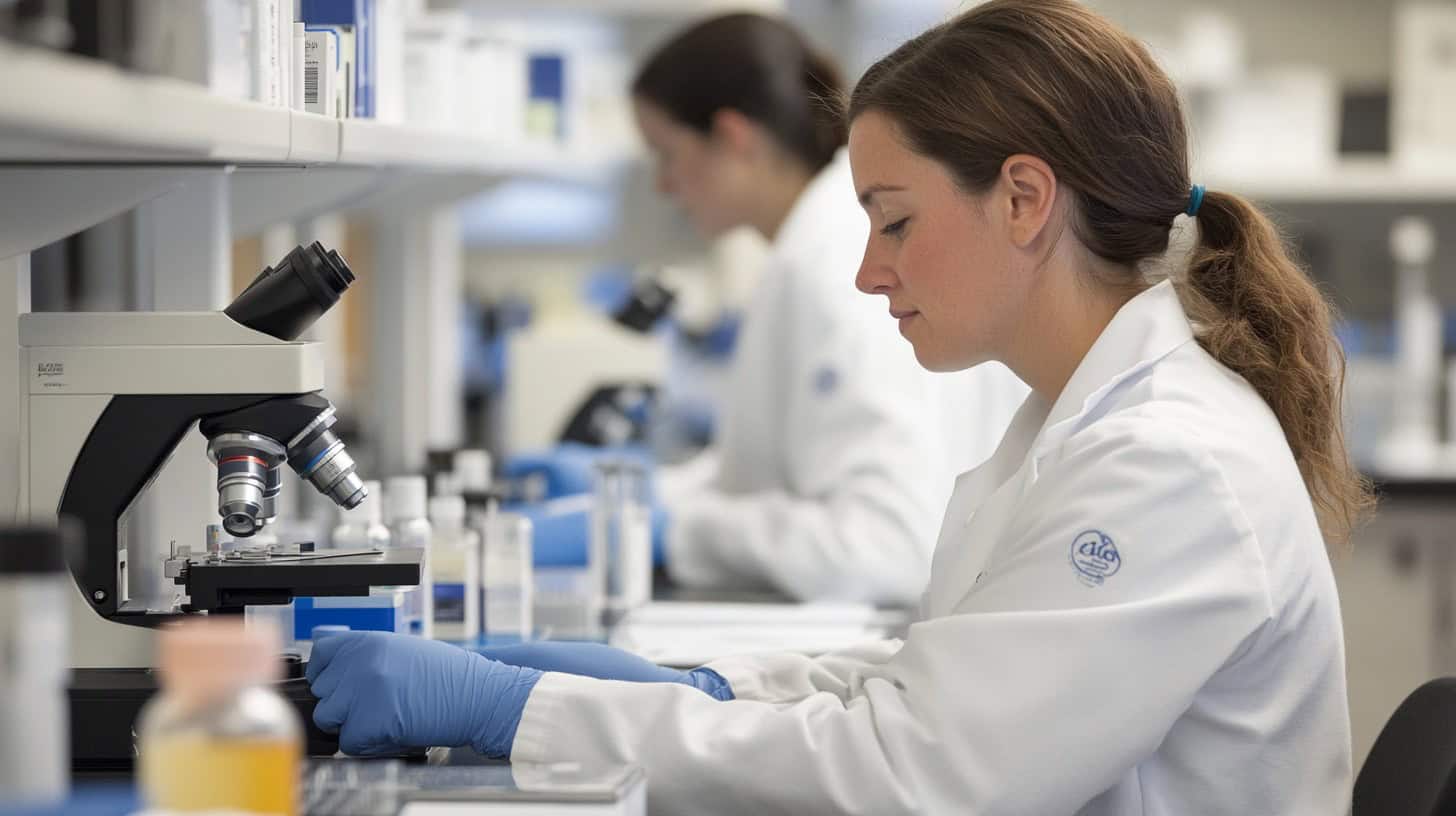Stem cell therapy sparks hope and hype. But what’s real? 17 facts cut through the noise. Embryonic stem cells come from 4-5 day old IVF embryos – not fetuses. 1 Adult stem cells can’t match their potential. 2 This post separates fact from fiction.
I’ve spent the past decade researching stem cell advancements. Now, I’ll share insider knowledge to clear up common myths.
Get ready for some mind-blowing truths about stem cell therapy. 3
Key Takeaways
Stem cells aren’t immortal – they age and accumulate mutations over time, debunking the myth of eternal youth.
Adult and fetal stem cells differ significantly – fetal stem cells have greater expansion ability and differentiation potential compared to adult stem cells.
Embryonic stem cell lines come from 4-5 day old IVF embryos, not fetuses, and their creation raises ethical concerns about embryo destruction.
Stem cells can come from various sources besides embryos, including adult tissues, umbilical cords, and reprogrammed skin cells (induced pluripotent stem cells).
While some stem cell therapies like bone marrow transplants are well-established, many treatments remain experimental and face challenges like cancer risks and tissue rejection.
Table of Contents
Debunking the Immortality Myth of Stem Cells
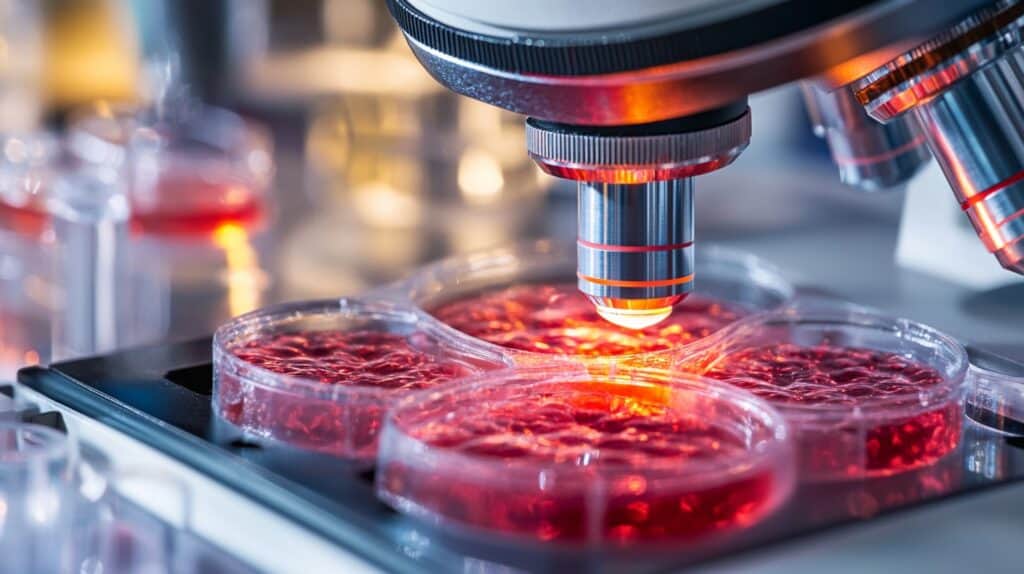
Stem cells aren’t immortal superheroes. Hematopoietic stem cells (HSCs) have low telomerase levels, helping them self-renew longer. But neural stem cells (NSCs) can’t divide in culture beyond 12 passages without major changes. 1 Mesenchymal stem cells (MSCs) have limited self-renewal and can’t expand indefinitely.
Age matters for stem cells. Older cells have less expansion ability. Studies show NSCs accumulate mutations over time. This debunks the myth of eternal stem cells and raises questions about how much does stem cell therapy cost for long-term treatments.
Stem cells age like everything else – they’re not the fountain of youth we once thought. 2
Clarifying Asymmetric Divisions in Stem Cell Identity
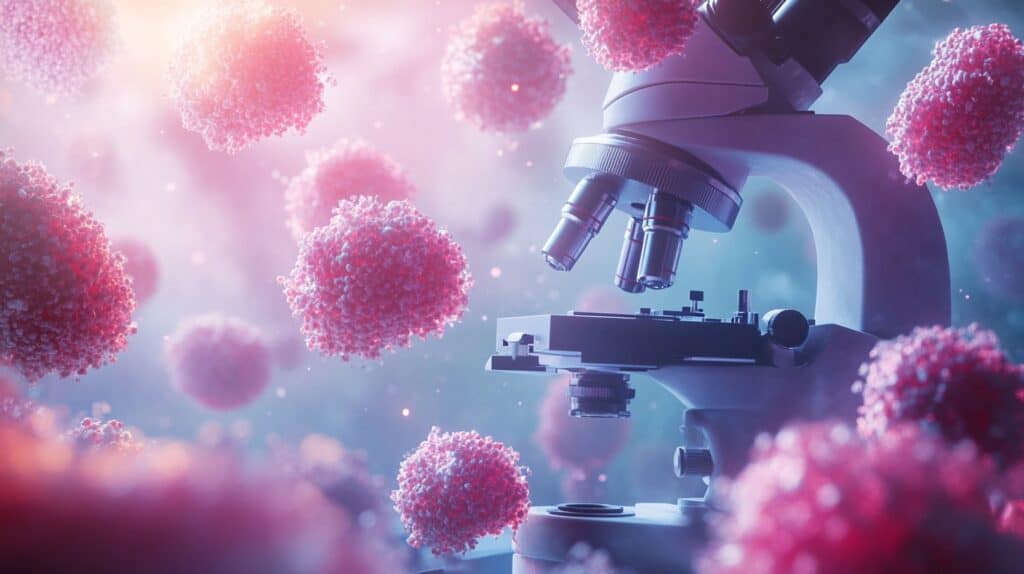
Asymmetric division plays a crucial role in stem cell self-renewal. This process creates two distinct daughter cells: one retains stem cell properties, while the other differentiates into a specific cell type. 3 Stem cells use this mechanism to maintain their population and generate diverse cell types simultaneously. The asymmetric distribution of cell fate determinants during division ensures each daughter cell receives a unique set of proteins and RNA molecules, directing their future development.
Cell diversity arises through two main mechanisms in stem cells. First, identical cells can differentiate through interactions with their environment. Second, asymmetric division distributes cell fate determinants unevenly. 4 This process is fundamental to stem cell biology, allowing for the generation of multipotent precursors and ultimately different cell types. Models A, B, and C illustrate how asymmetric division contributes to cellular diversity, while Model D shows that symmetric division can also lead to self-renewal or differentiation, depending on the cellular context.
Comparing Adult and Fetal Stem Cells
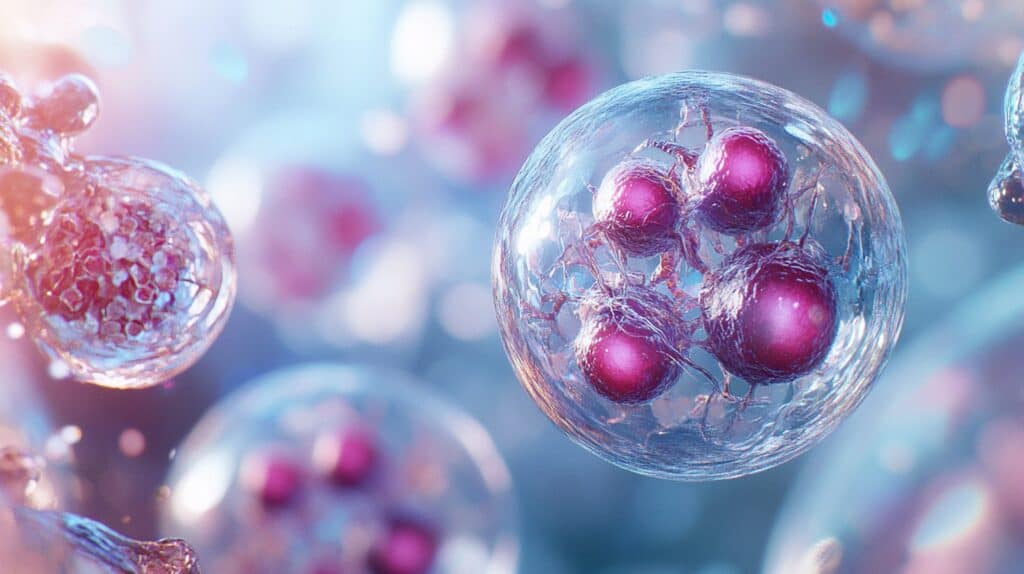
Adult and fetal stem cells differ significantly in their properties and potential. Let’s break down the key distinctions:
| Characteristic | Adult Stem Cells | Fetal Stem Cells |
|---|---|---|
| Aging Signs | Show DNA damage, mitochondrial instability, somatic mutations | Lack these aging markers |
| Expansion Ability | Limited | Greater (e.g., fetal liver HSCs expand more than adult bone marrow HSCs) |
| Differentiation Potential | More restricted | Broader (e.g., early neural tube progenitors respond to various inductive signals) |
| Telomerase Expression | Decreases with age (e.g., in neural stem cells) | Higher expression |
| Efficiency | Less efficient (e.g., aged HSCs generate fewer lymphoid progenitors) | More efficient |
These differences impact stem cell therapy outcomes. 5 Next, we’ll explore embryonic-like cells in adult tissues. 6
The Truth About Embryonic-like Cells in Adult Tissues
Adult tissues contain cells with embryonic-like properties, but they’re not identical to true embryonic stem cells. 1 These adult pluripotent cells can differentiate into various cell types – ectoderm, endoderm, and mesoderm – in lab settings.
However, they lack key features of embryonic stem cells, like forming teratomas or contributing to germ lines. This distinction is crucial for stem cell research and potential therapies. 6
ES cells possess unique characteristics that set them apart from their adult counterparts. They’re pluripotent and can be maintained in culture indefinitely. Researchers explore alternative sources like primordial germ cells or somatic nuclear transfer to create ES-like cells.
Understanding these differences helps scientists develop more effective cell-based therapies and regenerative medicine approaches. Next, we’ll examine the plasticity of stem cells compared to other cell types.
Examining the Plasticity of Stem Cells Compared to Other Cells
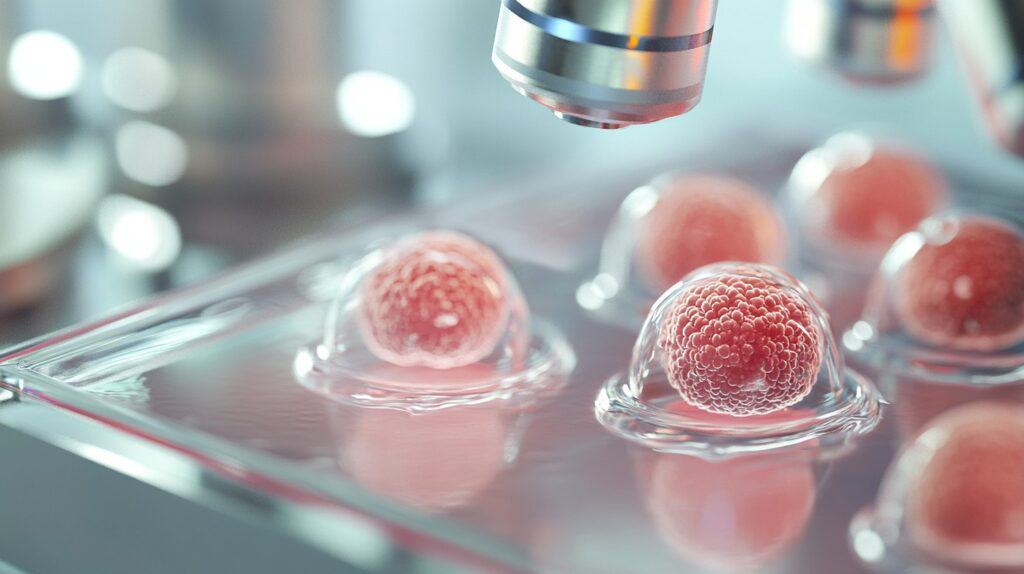
Stem cells possess remarkable plasticity, differentiating into various cell types from different tissues. Hematopoietic stem cells (HSCs) show “pragmatic immortality” due to their long lifespan. 1 Pluripotent cells in bone marrow can transform into astrocytes, oligodendrocytes, and neurons. 7 This flexibility sets stem cells apart from most other cell types.
Transdifferentiation, the conversion of one cell type to another, isn’t unique to stem cells. It can occur in restricted cell populations too. For example, pancreatic cells can become hepatocytes and vice versa.
But these events are rare – only a few hundred identifiable cells emerge from millions infused. This rarity highlights the exceptional nature of stem cell plasticity in regenerative medicine and cell therapies.
Evaluating the Effectiveness of Primitive Stem Cells in Therapy
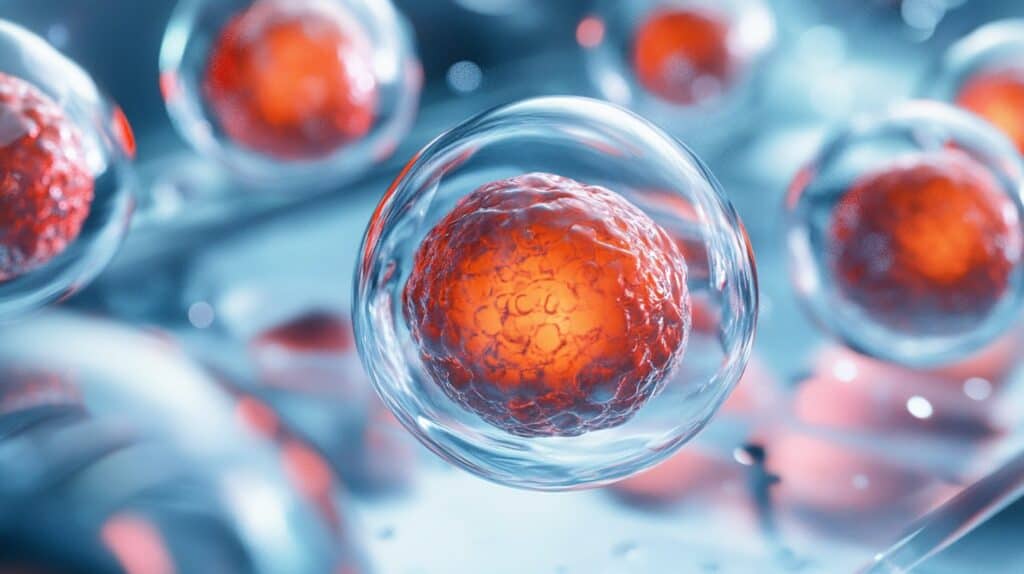
Primitive stem cells, while promising, aren’t always the best choice for therapy. Hematopoietic stem cell (HSC) transplants stand out as an exception, providing ongoing cell replacement. 1 For many treatments, intermediate or restricted progenitor cells often suffice. These cells show better differentiation and can be more effective for tissue repair.
The therapeutic needs dictate the preferred cell type, balancing self-renewal and differentiation potential. 1
Adult tissues have limited niches for stem cells, and cues for differentiation may not exist. Embryonic stem (ES) cells sometimes outperform neural stem cells (NSCs) in specific applications. 5 The key lies in matching the right cell type to the therapeutic goal, considering factors like self-renewal capability and differentiation potential.
Understanding Stem Cell Navigation to Injury Sites
Building on the effectiveness of primitive stem cells, let’s explore how these cells find their way to injury sites. Stem cell homing is a crucial process for successful therapy. It involves complex interactions between adhesion molecules, chemokines, and their receptors.
Hematopoietic stem cells (HSCs) must navigate to the bone marrow niche for effective treatment. This journey requires a precise orchestration of signals from soluble factors, cells, and the extracellular matrix. 1
Mesenchymal stem cells (MSCs) have shown remarkable ability to locate and travel to damaged areas in various models. However, challenges persist. Low survival rates and poor turnout of transplanted stem cells often hinder treatment success.
Injured environments lack the necessary support for stem cell survival. The CXCR4 receptor and SDF-1 chemokine play key roles in this homing process. Improving our understanding of these mechanisms could lead to more effective stem cell therapies for conditions like multiple myeloma and Hodgkin disease. 8
Immune Responses and Stem Cell Compatibility
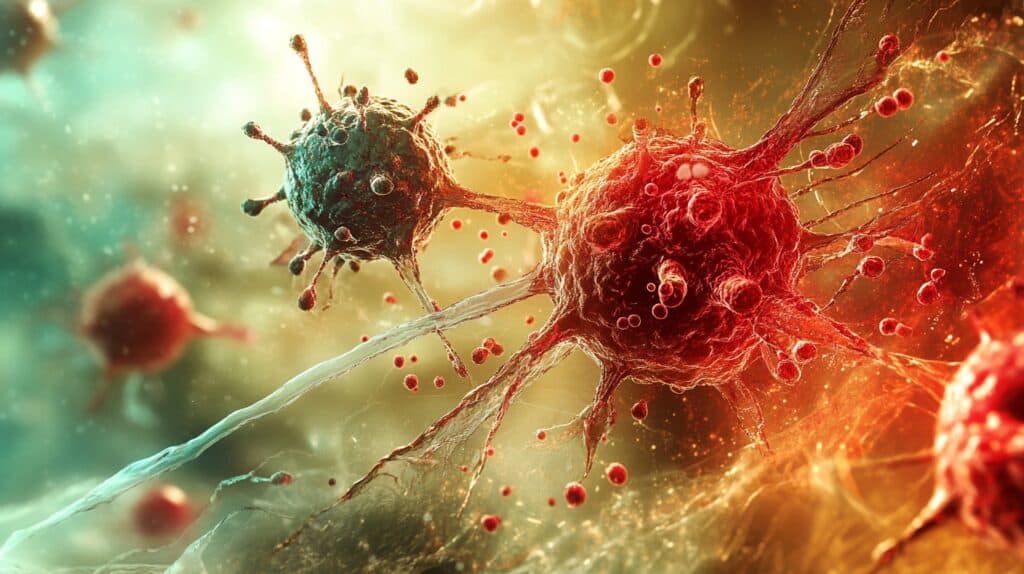
Stem cell transplants trigger complex immune responses. Autologous transplants, using a patient’s own cells, can provoke unexpected immunological reactions. This challenges the notion of perfect compatibility.
Brain tissue, once considered immune-privileged, shows strong reactions to transplanted cells. Neural stem cells express high levels of major histocompatibility complex (MHC) proteins, especially when exposed to inflammatory signals..
Human neural stem cells pose higher risks of immune rejection compared to rodent cells. They express more MHC class I molecules, increasing the likelihood of T-cell activation. Studies reveal that neural allografts and xenografts often face significant immune challenges.
Increased immunosuppression doesn’t always improve transplant survival. These findings highlight the intricate balance between stem cell therapy’s potential and the body’s defense mechanisms. 1.
Differences Between Stem Cell and Bone Marrow Therapy
Moving from immune responses, let’s explore the distinctions between stem cell and bone marrow therapies.
Stem cell and bone marrow treatments offer unique approaches to healing. Here’s a breakdown of their differences:
| Aspect | Stem Cell Therapy | Bone Marrow Therapy |
|---|---|---|
| Cell Type | Various stem cell types | Mainly hematopoietic stem cells |
| Source | Embryos, adult tissues, or induced pluripotent cells | Patient’s own bone marrow or donor |
| Application | Wider range of conditions | Blood disorders, some cancers |
| Procedure | Injection or infusion of cultured cells | Transplantation of bone marrow |
| History | Newer, still in research phase for many applications | Established since 1960s for specific conditions |
Hematopoietic stem cells from bone marrow have been used therapeutically since the 1960s. 9 These cells form the basis of bone marrow transplants, crucial for treating lymphoma, leukemia, and myeloma. 10 Mesenchymal stem cells show promise due to their immunomodulatory properties.Adult stem cells present fewer ethical concerns compared to embryonic ones.Induced pluripotent stem cells offer an alternative to embryonic sources.Research indicates stem cells can target injury sites and differentiate appropriately.
Ethical Concerns and Misconceptions
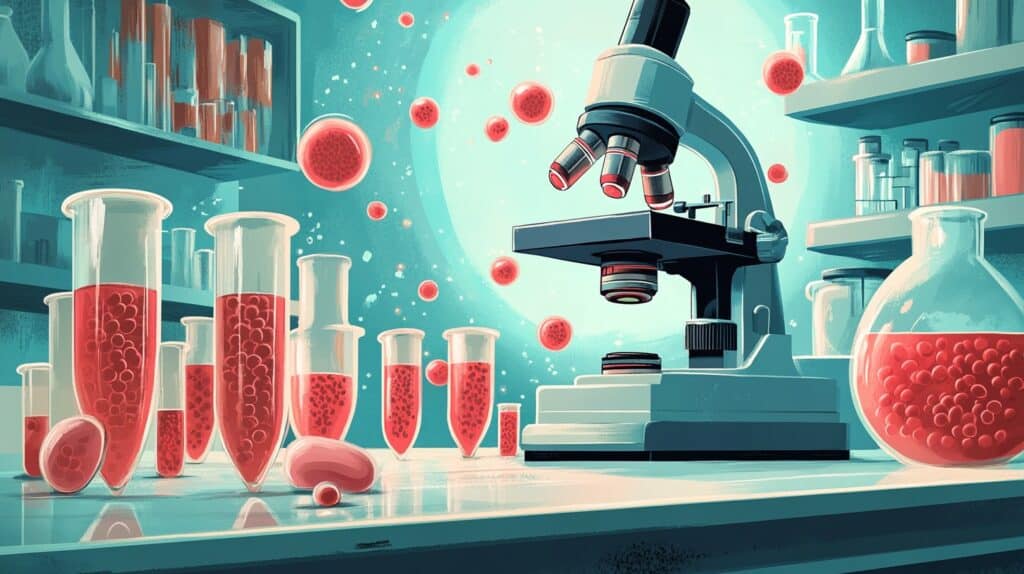
Stem cell research raises ethical questions. Some worry it destroys embryos, while others see its life-saving potential.
Exploring the Ethics of CIRM-funded Research
CIRM-funded research adheres to strict ethical standards. Researchers must follow rigorous regulations set by national and international bodies. These rules cover crucial areas like informed consent for biological material donation. 11 CIRM has established comprehensive policies for oocyte donation, ensuring ethical practices.
Ethics is knowing the difference between what you have a right to do and what is right to do. – Potter Stewart
Ethical concerns in stem cell research focus on deriving pluripotent stem cells from embryos. 5 CIRM’s policies align with NIH guidelines, maintaining high ethical standards. This approach protects donors’ rights and promotes responsible scientific advancement.
Origins of Embryonic Stem Cell Lines
Embryonic stem cell lines come from 4-5 day old blastocysts created during IVF. These tiny embryos, smaller than a grain of sand, contain about 100 cells. IVF clinics often have leftover embryos after successful pregnancies.
Couples can choose to donate these extras for research instead of discarding them. 5
Some stem cell lines originate from embryos with genetic defects, unsuitable for implantation. Scientists use these to study inherited diseases. IVF clinics follow strict ethical guidelines – no payment for egg donations in CIRM-funded research.
This ensures the process remains voluntary and altruistic. 11
The Impact of Creating Embryonic Stem Cell Lines
Creating embryonic stem cell lines destroys embryos, sparking ethical debates. 5 This process raises concerns about the moral status of embryos and their use in research. Federal funding policies have limited new hESC line creation, impacting scientific progress. 11 Couples undergoing fertility treatments face complex decisions about donating unused embryos for research.
Informed consent is crucial in embryo donation. Donors must understand how their embryos will be used and the potential implications. 11 Somatic Cell Nuclear Transfer (SCNT) adds another layer of controversy.
It involves creating embryos specifically for research purposes, challenging traditional ethical boundaries in stem cell science.
Common Misunderstandings about Stem Cell Sources
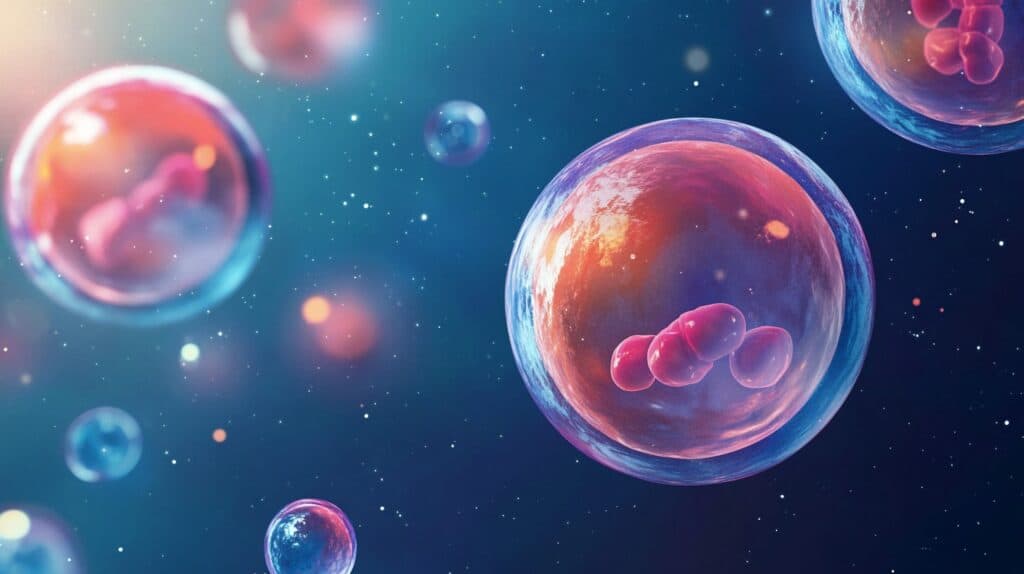
Stem cells come from more places than you might think. They’re not just from embryos – adult tissues, umbilical cords, and even skin cells can be sources too.
Sources of Stem Cells Explained
Stem cells originate from various sources in the human body. These unique cells have the potential to develop into different cell types, making them valuable for research and medical treatments.
- Embryonic Stem Cells: Derived from the inner cell mass of blastocysts, 4-5 days after fertilization. They’re pluripotent, capable of forming any cell type in the body. 1
- Adult Stem Cells: Found in specific tissues like bone marrow, skin, and liver. They’re multipotent, able to form a limited range of cell types related to their tissue of origin.
- Cord Blood Stem Cells: Collected from umbilical cord blood after birth. They’re rich in hematopoietic stem cells, useful for treating blood disorders.
- Induced Pluripotent Stem Cells (iPSCs): Created by reprogramming adult cells to an embryonic-like state. Shinya Yamanaka pioneered this technique in 2006, revolutionizing stem cell research. 6
- Neural Stem Cells: Located in the brain’s subventricular zone and hippocampus. They’re responsible for neurogenesis throughout life.
- Mesenchymal Stem Cells: Found in bone marrow, fat tissue, and dental pulp. They can differentiate into bone, cartilage, and fat cells.
- Amniotic Fluid Stem Cells: Obtained through amniocentesis. They possess properties of both embryonic and adult stem cells.
The Necessity of Using Various Stem Cell Types
Different stem cell types play crucial roles in developing treatments for various diseases. Research shows adult, embryonic, and induced pluripotent stem (iPS) cells each have unique properties and potential applications.
A National Academy of Sciences panel confirmed the necessity of human embryonic stem cell research alongside other cell types. Richard Hynes, a leading scientist, noted uncertainty about which specific cells would prove most useful for regenerative medicine. 12iPS cells, pioneered by Shinya Yamanaka in 2007, offer a promising alternative to embryonic stem cells. These adult cells are genetically reprogrammed to behave like embryonic stem cells, potentially reducing ethical concerns.
The California Institute for Regenerative Medicine (CIRM) has funded significant iPS cell research, recognizing their potential in disease modeling and drug discovery. 5
The Importance of Stem Cell Lines
Stem cell lines are crucial for advancing medical research and potential treatments. They provide a consistent, renewable source of cells for studying diseases, drug testing, and developing therapies.
Embryonic stem cell lines, derived from the inner cell mass of blastocysts, offer unique advantages due to their pluripotency – the ability to differentiate into any cell type in the body.
This makes them invaluable for regenerative medicine and understanding early human development. 1
Adult stem cell lines, though more limited in their differentiation potential, play a vital role in tissue-specific research and clinical applications. Hematopoietic stem cell lines, for instance, are essential in bone marrow transplantation for treating blood disorders.
Induced pluripotent stem (iPS) cell lines have emerged as an alternative to embryonic stem cells, offering similar properties without the ethical concerns associated with embryo use. 6
The Reality of Stem Cell Therapy and Research
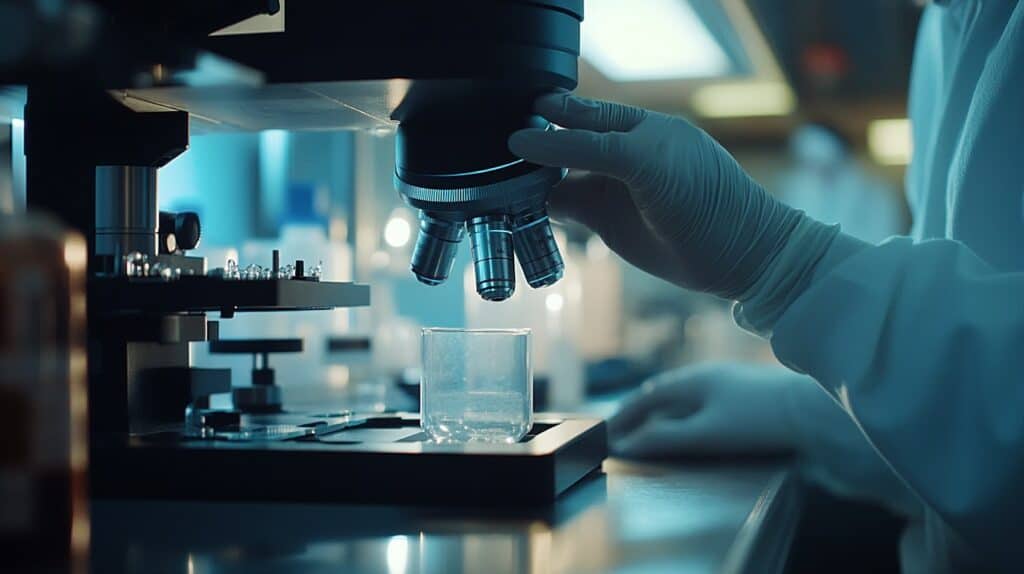
Stem cell therapy’s real-world impact spans from treating blood disorders to repairing damaged hearts. Want to know more about its successes and challenges? Keep reading.
What Constitutes Stem Cell Therapy
Stem cell therapy involves using stem cells to repair or replace damaged tissues. It’s not just a single treatment – it encompasses a range of procedures. FDA-approved therapies are limited, with only a few in clinical trials. 13 Hematopoietic stem cell transplantation stands out as an established treatment for blood disorders.
Promising research targets age-related macular degeneration (AMD). 13 Some clinics offer unproven treatments, skirting FDA regulations. Legitimate therapies use embryonic, adult, or induced pluripotent stem cells.
These cells can self-renew and differentiate into various cell types. The goal? To regenerate damaged tissues and organs, potentially revolutionizing medicine. 6
Success Stories in Stem Cell Treatments
Stem cell treatments have transformed lives. Reema Sandhu, battling multiple sclerosis, experienced significant improvements after an autologous stem cell transplant. 14 Dave Randle’s heart failure post-heart attack saw substantial recovery with stem cell injections.
George Norton regained a healthy immune system through a stem cell transplant for leukemia. 13
Andrew Robinson avoided knee replacement surgery, opting for a stem cell-based chondrotissue graft procedure. This approach proves promising for fitness injuries. Deepan Shah found relief from aggressive Crohn’s disease through stem cell therapy, leading a normal life afterward. 14 These cases highlight stem cells’ potential in treating various conditions, from autoimmune disorders to organ repair.
Challenges with Using Embryonic Stem Cells
Stem cell treatments show potential, but embryonic stem cells face specific challenges. Cancer risks are significant – these cells’ rapid growth can potentially cause tumor formation.
Tissue rejection is another issue, as the body may attack transplanted cells. 13 Scientists work on directing embryonic stem cells to become specific cell types consistently. Controlling cell proliferation remains a major challenge, requiring precise techniques to prevent uncontrolled growth. 15Ethical concerns further complicate embryonic stem cell research. The use of human embryos creates debates, affecting progress in potential applications. Insufficient regulation has resulted in clinics offering unproven therapies, taking advantage of vulnerable patients. 13 Brain treatments face particular challenges due to the complex nature of neural tissues. Researchers continue to work on overcoming these obstacles, aiming to realize the full potential of embryonic stem cells for regenerative medicine.
The Myth of Therapeutic Cloning
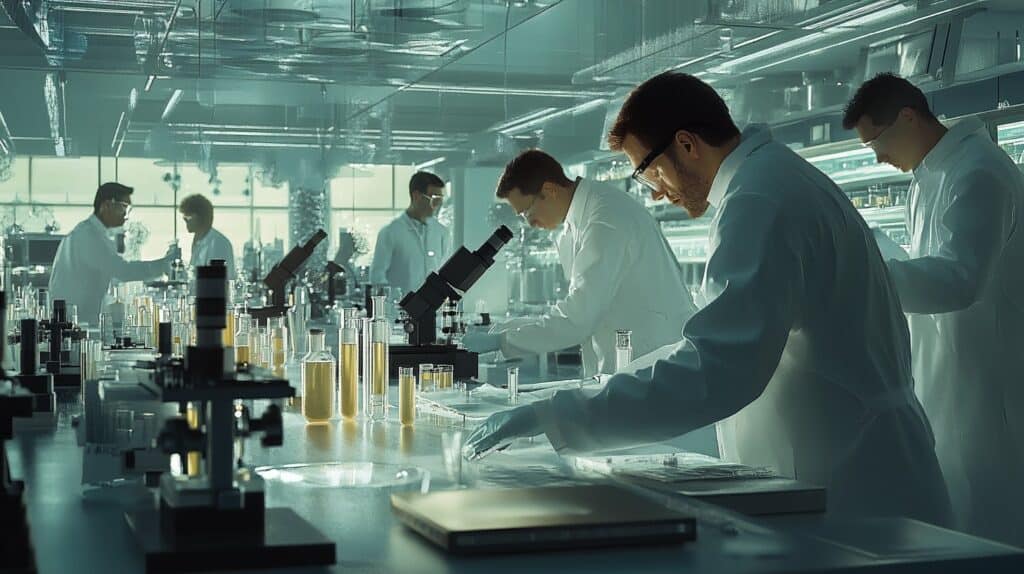
Therapeutic cloning’s promise of personalized treatments remains unfulfilled. Scientists face major hurdles in creating patient-specific stem cells through this method.
Defining Therapeutic Cloning
Therapeutic cloning involves creating embryos for stem cell harvesting, not reproduction. Scientists extract DNA from a patient’s cell and insert it into an egg cell. This process, called somatic cell nuclear transfer (SCNT), produces embryos genetically identical to the patient.
These embryos yield stem cells for potential treatments of Parkinson’s disease, muscular dystrophy, and diabetes. 16 The resulting nuclear-transfer embryonic stem cells (ntESC) possess totipotency, offering broad medical applications. 17 Ethical debates surround this technique due to embryo destruction and moral considerations.
Success and Challenges of Therapeutic Cloning in Humans
Therapeutic cloning in humans faces significant hurdles. Scientific challenges include mitochondrial heteroplasmy and limited oocyte availability. 16 Ethical concerns arise from the source and destruction of IVF embryos.
Legislation often fails to distinguish between therapeutic and reproductive cloning, complicating research efforts.
Despite obstacles, therapeutic cloning shows promise. It aims to create patient-specific cell lines for regenerative medicine. 18 Somatic cell nuclear transfer (SCNT) serves as the primary method.
This technique could potentially enable the synthesis of organs from scratch, revolutionizing transplant medicine.
Addressing the Fear of Human Cloning
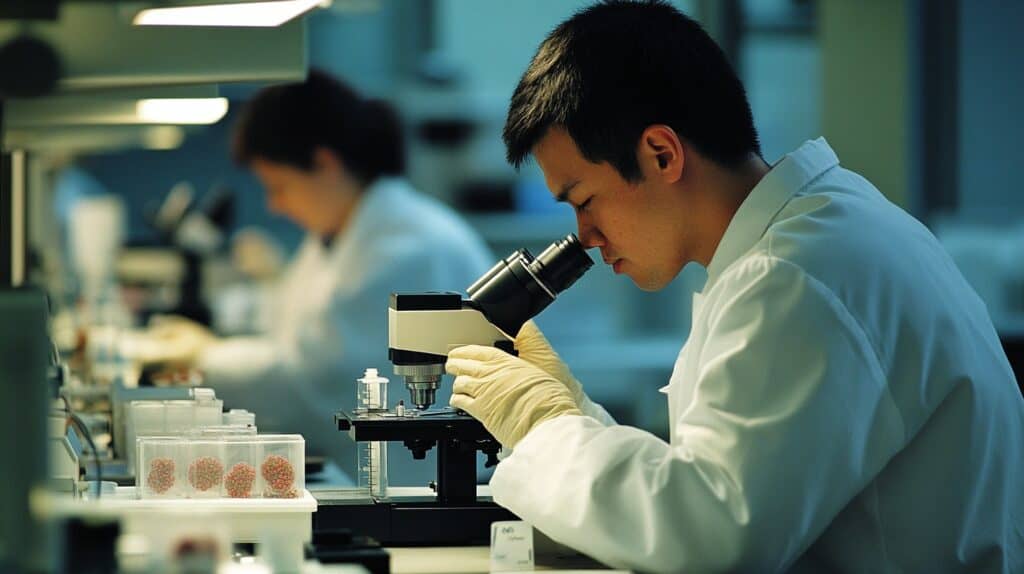
Human cloning fears often stem from sci-fi movies, not real science. According to the science geeks at Geek Extreme, current stem cell research focuses on medical treatments, not creating human copies.
The Possibility of Human Cloning Through Stem Cell Research
Stem cell research sparks fears of human cloning. Scientists can create embryos genetically identical to patients through somatic cell nuclear transfer (SCNT). This technique, used to clone Dolly the sheep in 1997, raised concerns about potential human replication. 19
Ethical debates surround human cloning possibilities. The Dickey-Wicker amendment bars federal funding for research involving embryo creation or destruction. Policies restrict new embryonic stem cell line development.
Controversies persist over abortion links and embryo status in these studies. 5
The Role of Induced Pluripotent Stem Cells (iPS)
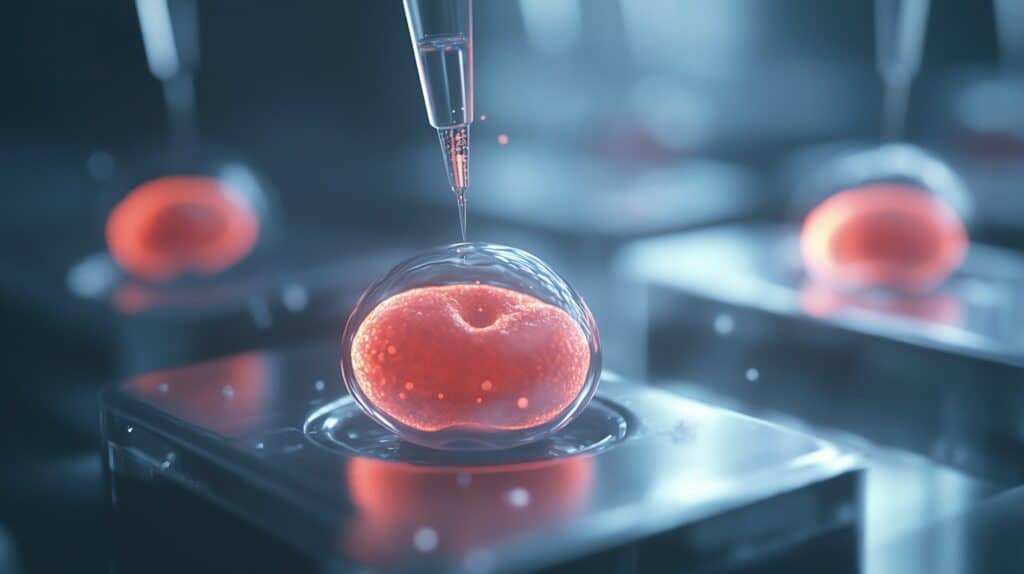
iPSCs offer a game-changing alternative to embryonic stem cells, sidestepping ethical issues… Want to know more? Keep reading!
Comparing iPS Cells and Embryonic Stem Cells
Induced pluripotent stem cells (iPSCs) and embryonic stem cells (ES cells) share key similarities but differ in origin. Here’s a comparison:
| Aspect | iPSCs | ES Cells |
|---|---|---|
| Origin | Adult somatic cells | Embryos |
| Discovery | 2007 by Shinya Yamanaka | 1998 by James Thomson |
| Differentiation Potential | Can form any cell type | Can form any cell type |
| Gene Expression | ~50 genes differ from ES cells | Baseline for comparison |
| Ethical Concerns | Minimal | Significant |
| Availability | Abundant | Limited |
| Neural Differentiation | Equivalent to ES cells | Equivalent to iPSCs |
Gene sequencing revealed only 50 out of 20,000-25,000 genes showed expression differences between ES cells and iPSCs. 20 Both cell types demonstrated equal ability to differentiate into neural cells. 21 Yamanaka’s work on iPSCs earned him a Nobel Prize in 2012.The debate on functional equivalence between iPSCs and ES cells continues in the scientific community.
The Debate on Stem Cell Potency
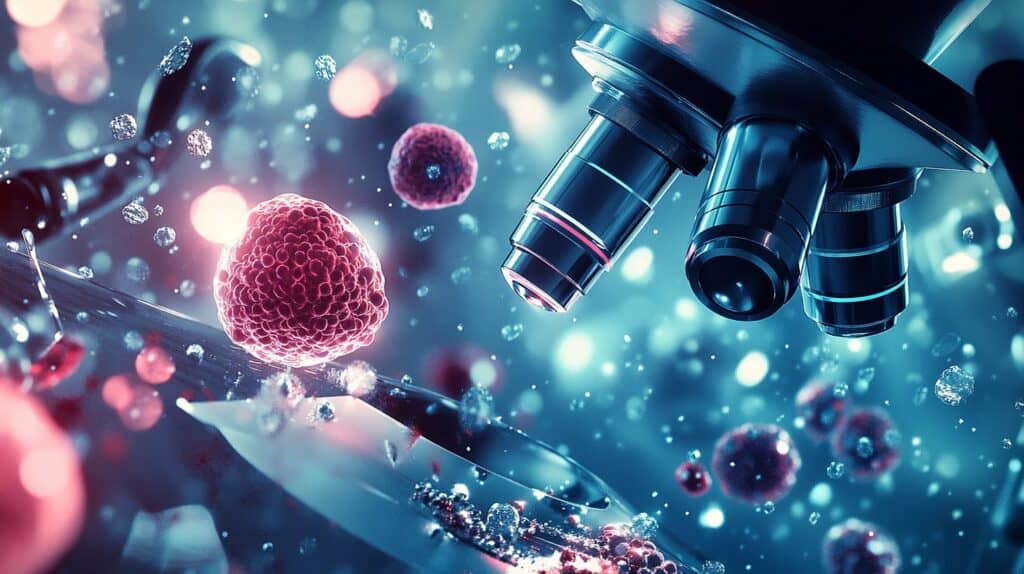
The debate on stem cell potency heats up. Adult and embryonic stem cells differ in their ability to transform into various cell types.
Comparing Potency of Adult and Embryonic Stem Cells
Adult and embryonic stem cells differ in their potency and applications. This comparison highlights key distinctions:
| Characteristic | Adult Stem Cells | Embryonic Stem Cells |
|---|---|---|
| Potency | Multipotent or unipotent | Pluripotent |
| Differentiation Ability | Limited to specific cell types | Can form all cell types in the body |
| Source | Various adult tissues | Early-stage embryos |
| Availability | More readily available | Limited availability |
| Ethical Concerns | Fewer ethical issues | More ethical debates |
| Clinical Applications | Over 3,000 clinical trials | Fewer clinical trials due to challenges |
| Immunomodulatory Properties | MSCs show strong immunomodulation | Less understood immunomodulatory effects |
| Tumor Formation Risk | Lower risk | Higher risk of teratoma formation |
Researchers debate whether adult stem cells match or surpass embryonic stem cells in therapeutic potential. 22 Adult stem cells, particularly mesenchymal stem cells, demonstrate promising immunomodulatory properties. 9 Embryonic stem cells offer greater differentiation potential but face more ethical and practical hurdles in clinical applications.
People Also Ask
What are human embryonic stem cells?
Human embryonic stem cells come from the inner cell mass of early embryos. They’re self-renewing and undifferentiated. Scientists get them through in vitro fertilization.
How do stem cell transplants work?
Hematopoietic stem cell transplants use bone marrow cells. They treat diseases like leukemia. The process can cause graft-versus-host disease when immune cells attack the recipient’s body.
Where do we find tissue-specific stem cells?
Tissue-specific stem cells exist in stem cell niches throughout the body. Examples include neural crest stem cells and radial glia in the brain’s subventricular zone.
Can stem cells be cloned?
Yes, scientists can clone stem cells. This process creates genetically identical cells. It’s useful for research and potential therapies.
What’s the link between stem cells and pregnancy?
Pregnant women’s amniotic fluid contains stem cells. Researchers study these perinatal cells for potential medical uses.
How do stem cells avoid immune rejection?
Some stem cells are in immunologically privileged sites. This means they’re protected from immune reactions. But not all stem cells have this advantage. HLA matching helps prevent rejections in transplants.
References
^ https://www.ncbi.nlm.nih.gov/pmc/articles/PMC2605483/
^ https://www.dvcstem.com/post/5-myths-about-stem-cells
^ https://www.ncbi.nlm.nih.gov/pmc/articles/PMC3347516/
^ https://www.ncbi.nlm.nih.gov/pmc/articles/PMC5870685/
^ https://www.cirm.ca.gov/myths-and-misconceptions-about-stem-cell-research/
^ https://www.cedars-sinai.org/discoveries/stem-cells-myths-and-musings.html (2019-07-14)
^ https://pubmed.ncbi.nlm.nih.gov/16419613/
^ https://www.intra-v.com/blog/debunking-myths-understanding-iv-stem-cell-therapy (2024-02-21)
^ https://www.ncbi.nlm.nih.gov/pmc/articles/PMC4537770/
^ https://www.cancerresearchuk.org/about-cancer/treatment/bone-marrow-stem-cell-transplants/what-is
^ https://www.ncbi.nlm.nih.gov/pmc/articles/PMC2726839/
^ https://prmpractice.com/debunking-myths-about-stem-cells/ (2024-02-22)
^ https://www.ncbi.nlm.nih.gov/pmc/articles/PMC7136870/
^ https://cells4life.com/2019/12/5-stem-cell-success-stories/
^ https://www.usccb.org/issues-and-action/human-life-and-dignity/stem-cell-research/practical-problems-with-embryonic-stem-cells
^ https://www.ncbi.nlm.nih.gov/pmc/articles/PMC2323472/
^ https://www.ncbi.nlm.nih.gov/pmc/articles/PMC7245529/
^ https://www.genome.gov/about-genomics/fact-sheets/Cloning-Fact-Sheet (2020-08-15)
^ https://www.ncbi.nlm.nih.gov/books/NBK190607/
^ https://hsci.harvard.edu/news/are-embryonic-stem-cells-and-artificial-stem-cells-equivalent
^ https://www.ncbi.nlm.nih.gov/pmc/articles/PMC6682501/
^ https://www.unmc.edu/stemcells/educational-resources/prosandcons.html
